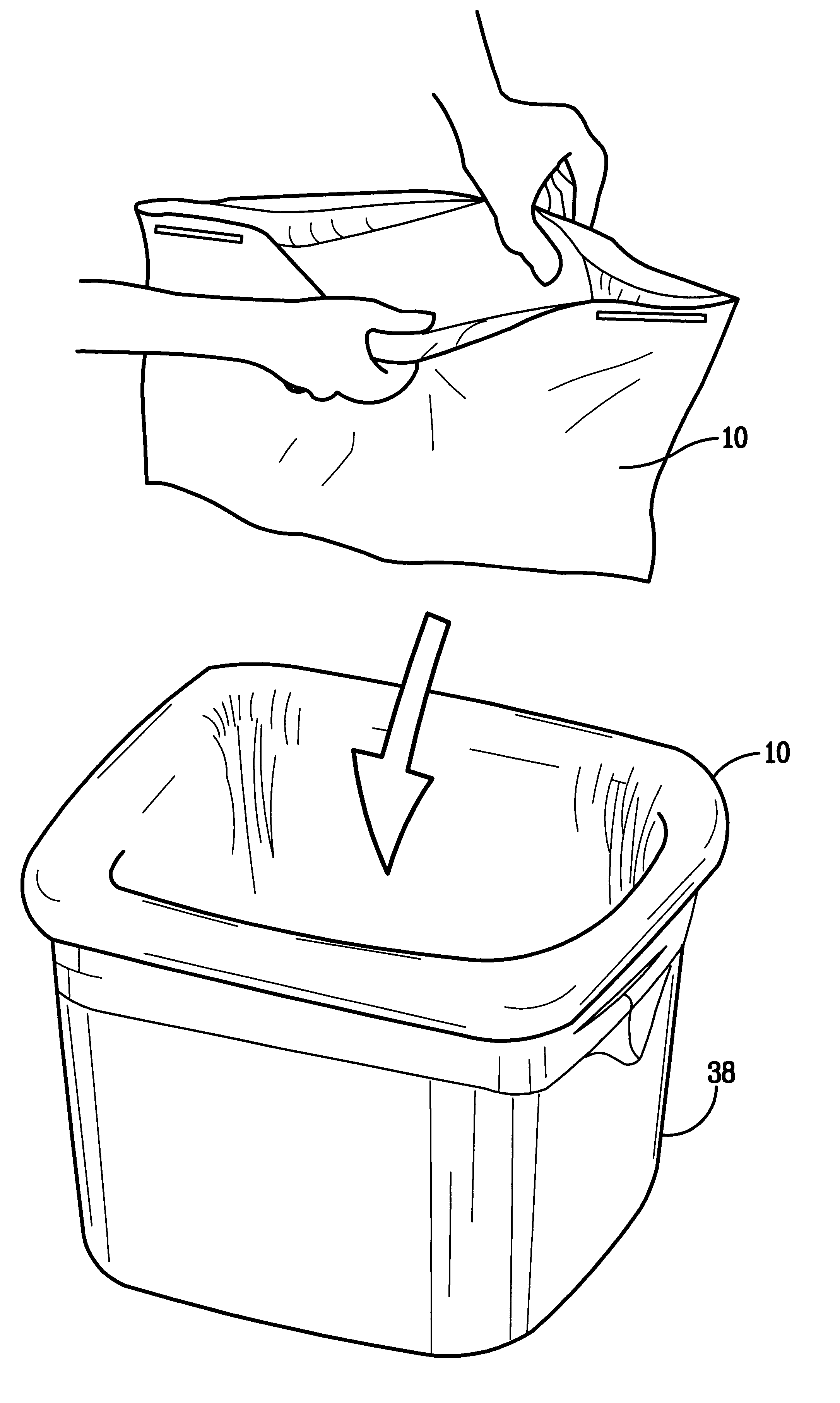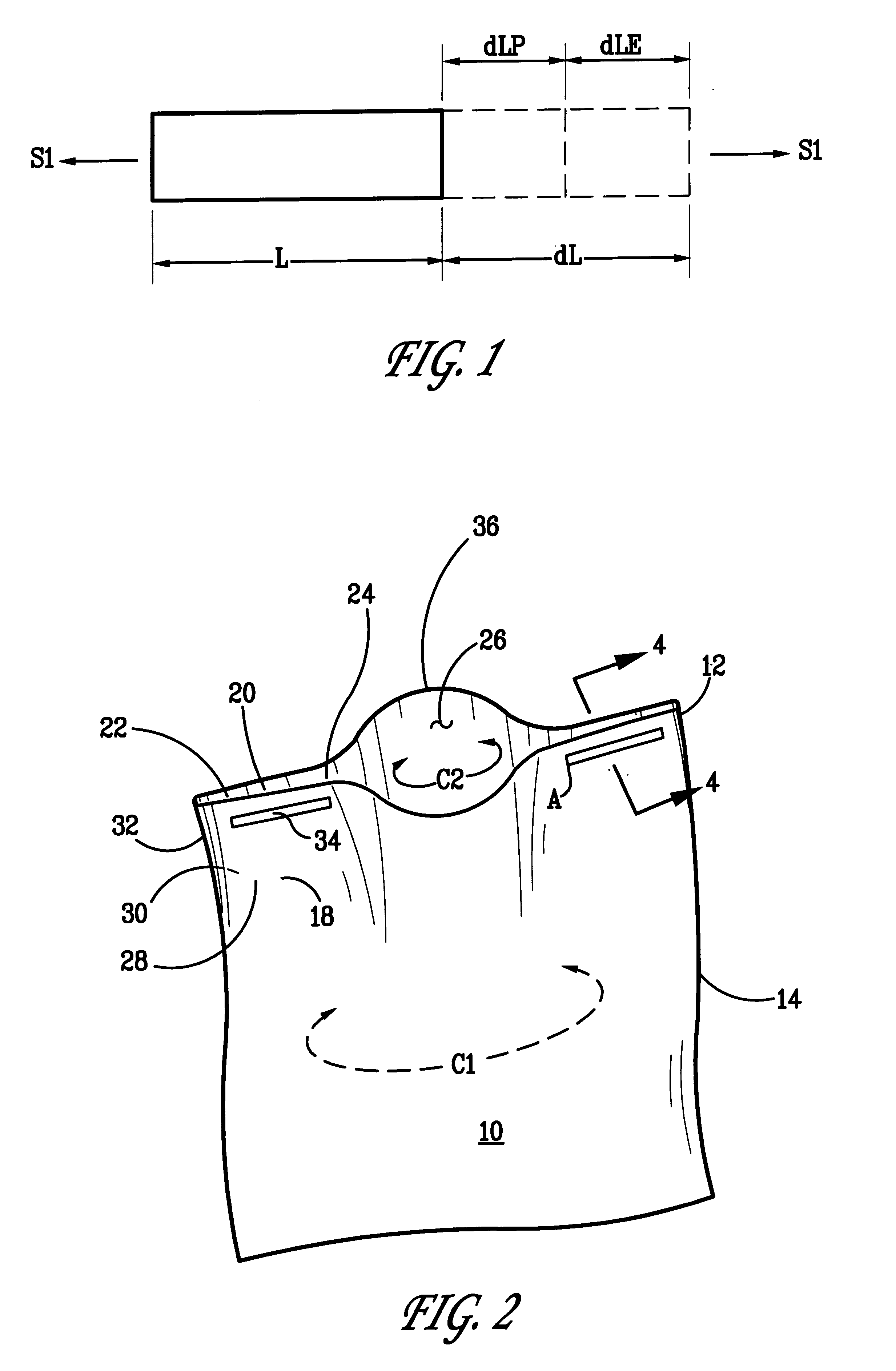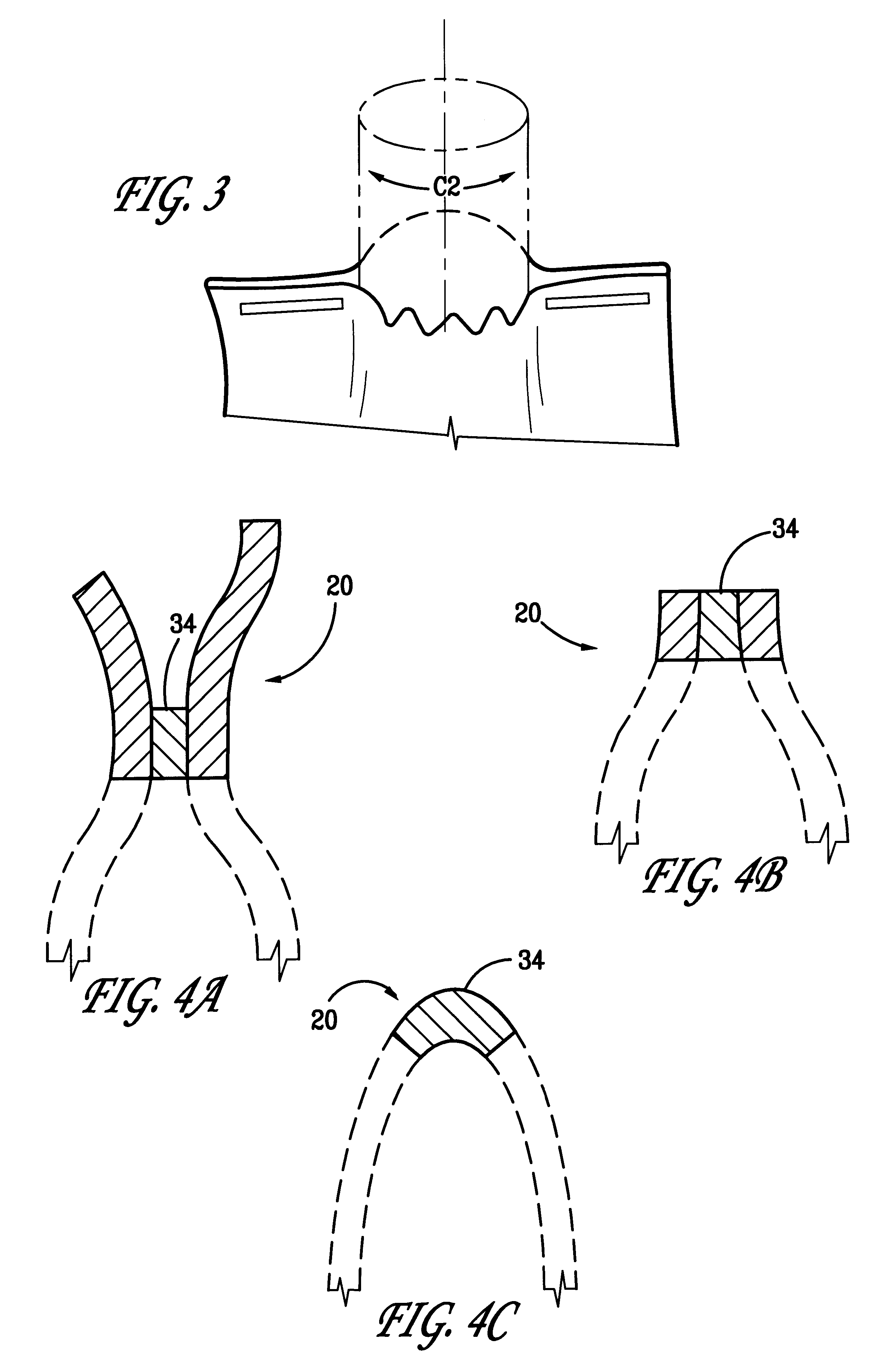Plastic liner bag with mouth retaining means
a plastic bag and mouth retaining technology, applied in the field of tubular bags, can solve the problems of plastic bags that are generally not self-supporting, top portion of the bag to slide or fall off, or otherwise disengage from the supporting structure,
- Summary
- Abstract
- Description
- Claims
- Application Information
AI Technical Summary
Benefits of technology
Problems solved by technology
Method used
Image
Examples
Embodiment Construction
1. PLASTIC BAG FILMS
While a bag or liner can be made of virtually any plastic film, the plastic film typically used in a bag or liner construction is not an elastomer, but rather is another plastic such as an olefin plastic. This is especially the case for a bag used for lining a waste or recycling receptacle. Perhaps the most common plastics for liner films at present are ethylene plastics, that is, plastics covered by the ASTM D 883-96 definition for "ethylene plastics" (the ASTM D 883-96 definition is as follows: "plastics based on polymers of ethylene or copolymers of ethylene with other monomers, the ethylene being in greatest amount by mass."--Reprinted, with permission, from the Annual Book of ASTM Standards, copyright American Society for Testing and Materials, 100 Bar Harbor Drive, West Conshohocken, Pa., 19428). For example, ethylene plastics for bag films include Low Density Polyethylenes (LDPE), having a density in the range of approximately 0.910 to 0.925 g / cc, Linear L...
PUM
 Login to View More
Login to View More Abstract
Description
Claims
Application Information
 Login to View More
Login to View More - R&D
- Intellectual Property
- Life Sciences
- Materials
- Tech Scout
- Unparalleled Data Quality
- Higher Quality Content
- 60% Fewer Hallucinations
Browse by: Latest US Patents, China's latest patents, Technical Efficacy Thesaurus, Application Domain, Technology Topic, Popular Technical Reports.
© 2025 PatSnap. All rights reserved.Legal|Privacy policy|Modern Slavery Act Transparency Statement|Sitemap|About US| Contact US: help@patsnap.com



